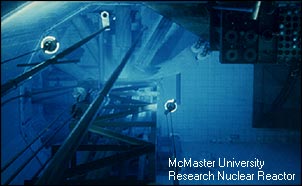Battery-Powered Balancing Robot DIY STEM Kit
$9.99$5.95
 Cerenkov radiation is exactly that -- but for light. If a particle moves faster
than the speed of light, it must create a shockwave, and radiate energy. Now we can
return to the actual question -- if relativity states that the speed of light can
not be exceeded, how can there be Cerenkov radiation?
Cerenkov radiation is exactly that -- but for light. If a particle moves faster
than the speed of light, it must create a shockwave, and radiate energy. Now we can
return to the actual question -- if relativity states that the speed of light can
not be exceeded, how can there be Cerenkov radiation?